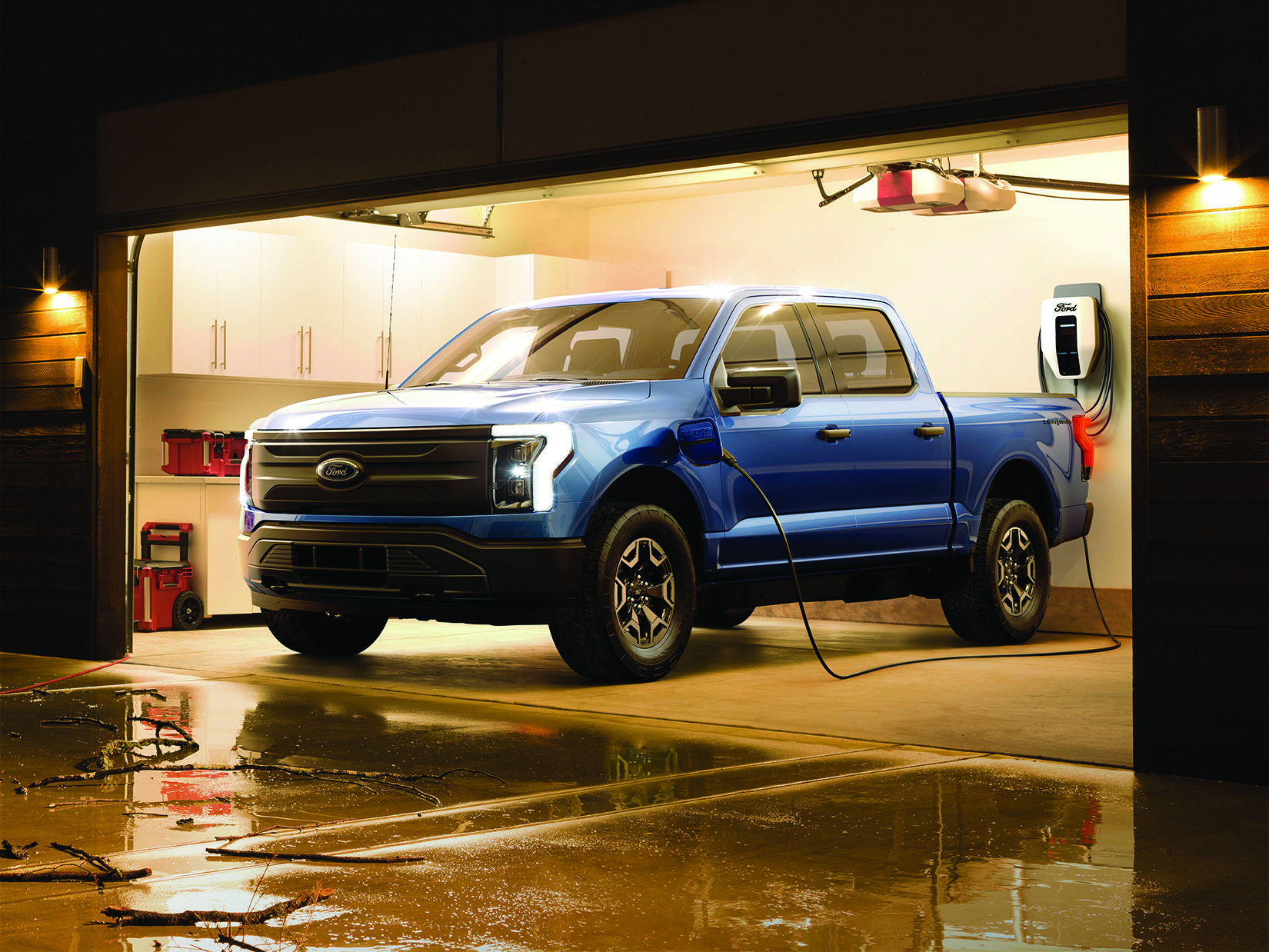By Pat Keegan and Brad Thiessen
Q: I read your recent article about electric trucks and SUVs, and I’m excited that some electric vehicle options are now better suited to rural areas. Can you tell me more about how the battery system and charging works in an electric vehicle?
We’ve been hearing more buzz about electric vehicles (EVs) in rural America, so it’s a good time to know more about EV batteries and charging options.
Batteries, like the vehicles they power, come in different sizes that provide different mileage ranges. Most people charge their EVs at home, but if you take a cross-country trip, you can charge your EV at one of the rapidly growing number of charging stations around the country. The Department of Energy estimates there are currently 50,000 EV charging sites in the U.S.
Electric vehicles will tell you how many miles are remaining before a charge is needed, and many models offer in-car navigation to the next charger. For EVs without this feature, there are many smart phone apps available to help you navigate to the next charging site.
We often refer to three levels of electric vehicle charging. A new EV comes equipped for Level 1 (L1) charging, which simply plugs into a regular electrical outlet. This is the slowest option for charging, but if you don’t travel many miles per day or your EV is a plug-in hybrid (PHEV) with a small battery, L1 charging will likely meet your needs. L1 requires less than 1.5 kilowatts, which is about the same as a hair dryer, and will give the battery 3 to 5 miles of range per hour of charging. If you drive your car 40 miles or less during the day and can charge it for 10 hours every night, this method should work for your daily driving needs. But if you have an all-electric EV with a 60-kWh battery, it would take more than 40 hours to fully charge with L1.
Level 2 (L2) is the most common type of charging because it operates on 240-volt power, which nearly every home has. Level 2 can supply roughly 6 to 19 kW of power, depending on what your vehicle can accept and your electric circuit’s amperage. L2 can provide 100 miles of charge in several hours, and fully charge a large battery in eight to 10 hours. You may need to install a new circuit if there isn’t a 240-volt circuit near the area you park. L2 is the most common type of charging at public sites, like grocery stores, libraries and workplaces.
Level 3 (L3) chargers, often called DC Fast Chargers (DCFC), require much more current and are not installed in homes. L3 chargers are typically seen at specific EV charging sites and some gas stations. These chargers have power levels from 50 kW to 350 kW, depending on the charging station. Some new EVs can accept 250 kW or more and charge a battery from 10% to 80% in less than 20 minutes. Some older EV models may take an hour or more to achieve 80% at 50 kW. When selecting an EV, the charge time from 10% to 80% can be an important factor if you regularly head out on road trips.

“Vehicle to home” is an exciting new technology that enables EVs to power a home or shop during a power outage. Ford’s upcoming F-150 Lightning Pro (2022), Hyundai’s Ioniq5 and Kia’s EV6 crossovers, and the 2022 Volkswagens are slated to offer this option.
Another important decision is when to charge your EV. Your local electric co-op may offer special rates if you charge your EV at night when energy demand is lower, which can help keep electricity costs down. Electric co-ops around the country are working on programs to prepare for more EV home charging, so reach out to your co-op if you have questions about EVs, charging or specific programs and rates.
EV charging infrastructure is currently being built across the country. You may not see them in your area yet, but they’re coming, so get charged up about electric vehicles.ν
Pat Keegan and Brad Thiessen of Collaborative Efficiency write on energy efficiency topics for the National Rural Electric Cooperative Association, the national trade association representing more than 900 local electric cooperatives. From growing suburbs to remote farming communities, electric co-ops serve as engines of economic development for 42 million Americans across 56% of the nation’s landscape. For additional energy tips and information on Collaborative Efficiency visit: www.collaborativeefficiency.com/energytips.
Patrick Keegan writes on consumer and cooperative affairs for the National Rural Electric Cooperative Association, the Arlington, Va.-based service arm of the nation’s 900-plus consumer-owned, not-for-profit electric cooperatives. Write to [email protected] for more information.




